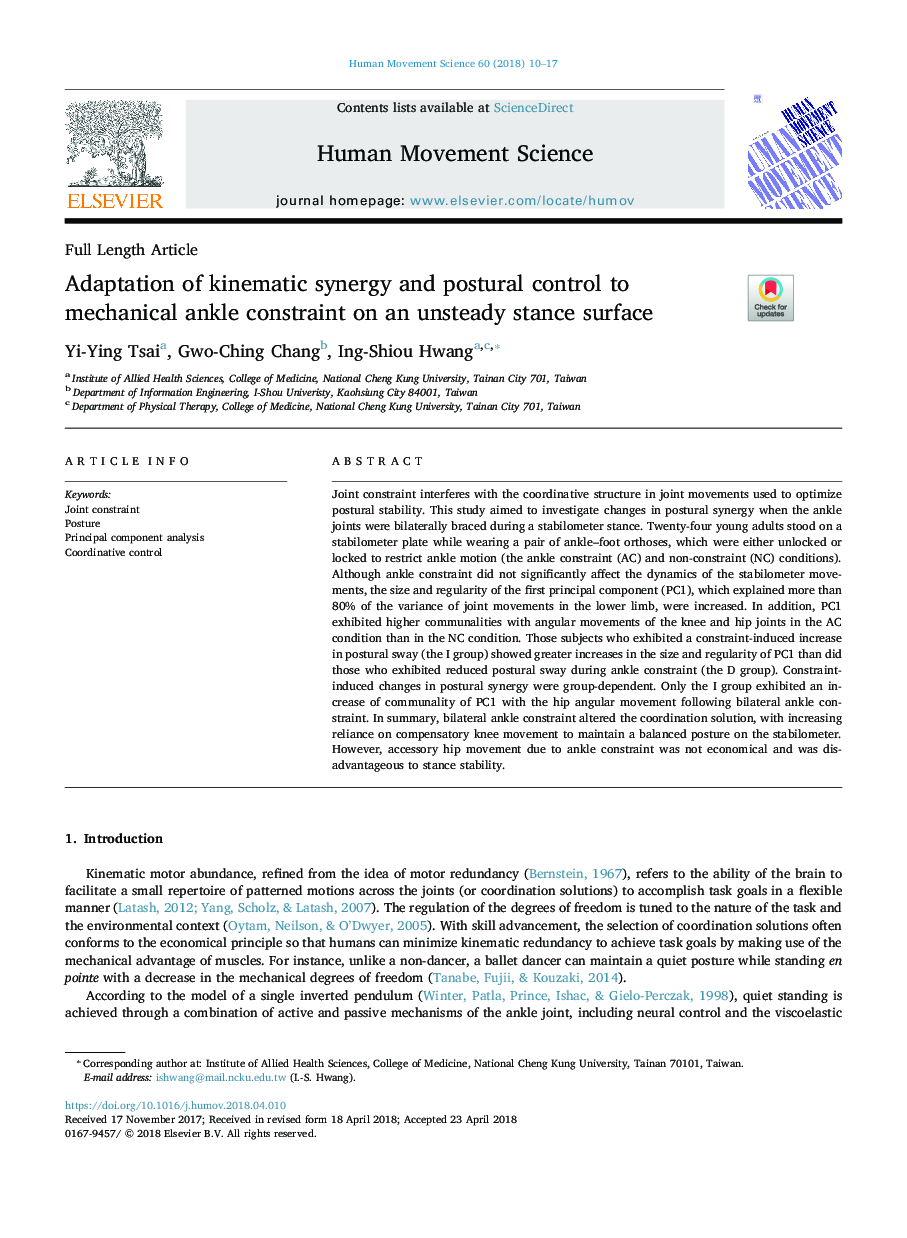| کد مقاله | کد نشریه | سال انتشار | مقاله انگلیسی | نسخه تمام متن |
|---|---|---|---|---|
| 7290757 | 1474204 | 2018 | 8 صفحه PDF | دانلود رایگان |
عنوان انگلیسی مقاله ISI
Adaptation of kinematic synergy and postural control to mechanical ankle constraint on an unsteady stance surface
ترجمه فارسی عنوان
تطبیق سینگی سینماتیک و کنترل موضعی به مچ پا مچ پا بر روی یک وضعیت ایستاده ناپایدار
دانلود مقاله + سفارش ترجمه
دانلود مقاله ISI انگلیسی
رایگان برای ایرانیان
کلمات کلیدی
محدودیت مشترک، پوسیدگی، تجزیه و تحلیل مولفه اصلی، کنترل هماهنگ،
موضوعات مرتبط
علوم زیستی و بیوفناوری
علم عصب شناسی
علوم اعصاب شناختی
چکیده انگلیسی
Joint constraint interferes with the coordinative structure in joint movements used to optimize postural stability. This study aimed to investigate changes in postural synergy when the ankle joints were bilaterally braced during a stabilometer stance. Twenty-four young adults stood on a stabilometer plate while wearing a pair of ankle-foot orthoses, which were either unlocked or locked to restrict ankle motion (the ankle constraint (AC) and non-constraint (NC) conditions). Although ankle constraint did not significantly affect the dynamics of the stabilometer movements, the size and regularity of the first principal component (PC1), which explained more than 80% of the variance of joint movements in the lower limb, were increased. In addition, PC1 exhibited higher communalities with angular movements of the knee and hip joints in the AC condition than in the NC condition. Those subjects who exhibited a constraint-induced increase in postural sway (the I group) showed greater increases in the size and regularity of PC1 than did those who exhibited reduced postural sway during ankle constraint (the D group). Constraint-induced changes in postural synergy were group-dependent. Only the I group exhibited an increase of communality of PC1 with the hip angular movement following bilateral ankle constraint. In summary, bilateral ankle constraint altered the coordination solution, with increasing reliance on compensatory knee movement to maintain a balanced posture on the stabilometer. However, accessory hip movement due to ankle constraint was not economical and was disadvantageous to stance stability.
ناشر
Database: Elsevier - ScienceDirect (ساینس دایرکت)
Journal: Human Movement Science - Volume 60, August 2018, Pages 10-17
Journal: Human Movement Science - Volume 60, August 2018, Pages 10-17
نویسندگان
Yi-Ying Tsai, Gwo-Ching Chang, Ing-Shiou Hwang,
